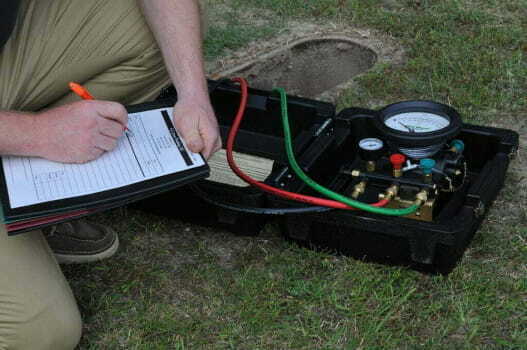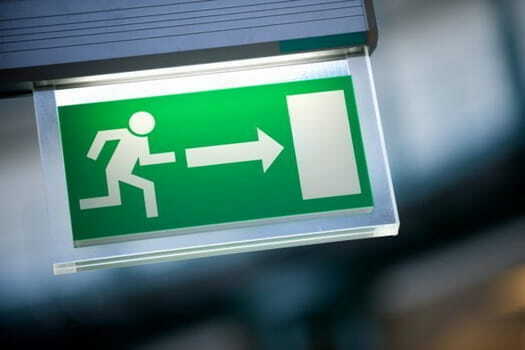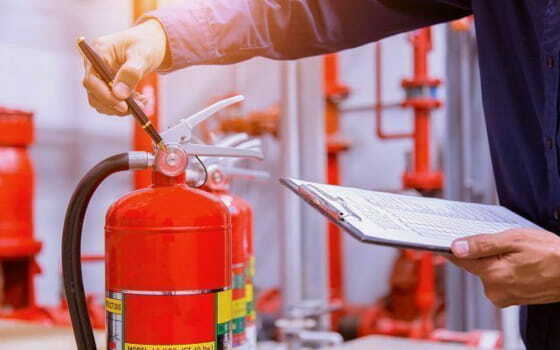Free Quote
Emergency and Exit Lighting
Offices require several safety features, including proper emergency and exit lighting. If you already have them in place, then when did you last test them? The fact is that New Zealand law (New Zealand Standards 2293.2) requires businesses to test their emergency and exit lighting every six months to ensure that they still work.
The reason for the testing is obvious. What would happen if a fire started and the lights go out, and everything goes dark? The office gets full of smoke, and everyone has to evacuate quickly. If they didn’t have the emergency lighting and exit lighting to guide them, how are they going to get out?
The Types of Exit Lighting
Exit lighting is typically installed over doors or as directions to guide people to the closest exit so they can escape in an emergency. There are two main types of exit lights; one that is constantly turned on and one that only comes on in the event of power failure.
For the kind that is always on, there are two sets of bulbs built into them. There are the main bulbs that are powered by the same power supply as the rest of the building, and a low voltage bulb powered by a battery in the light. This second light comes on in the event of a power outage. Exit lights that appear to be working normally after a power failure could have a flat battery or a burned-out bulb, which would prevent them from working properly when the time comes.
The emergency light is connected to the main power supply for the building. The power keeps the battery charged. If the power goes down for some reason, it triggers a circuit in the light fixture that turns on the low voltage bulb using the power from the battery. If there’s no charge in the battery, then the light becomes dim too quickly to help anyone. If the bulb is burned out, then it won’t come on at all.
Emergency Lighting
Many businesses have some kind of emergency lighting to offer some basic lighting in the event of a power outage. This kind of lighting – sometimes called “spitfire lighting” – is placed above stairs and inside rooms such as toilets to offer enough light for people to quickly and safely move through the area in an emergency. Emergency lighting should also be tested regularly. Much like exit lighting, proper testing of emergency lighting is a requirement for your building warrant of fitness.
Exit and Emergency Light Testing Services
Count on us to deliver a full range of emergency and exit lighting tests for businesses. Our services include;
- 90-minute battery testing with circuit breaker testing and manual testing
- Inspecting light bulbs and replacing broken or damaged bulbs as needed
- Inspecting, testing, and replacing batteries
- Inspecting and replacing diffusers
- Checking to ensure compliance with current safety standards for sign type and distance
- Cleaning all reflective surfaces to ensure maximum light illumination
- Documenting testing and results to give you records for your maintenance book and safety logbook

How to Test Exit Lights
It is required by New Zealand standards to test exit lights every six months. Exit lights should remain operational for at least 90 minutes when operating on battery power.
Many emergency exit signs are built with a “push to test” button built into the casing. Press the button and the battery-powered lights will come on. The light should be timed and monitored to ensure that it stays lit for a full 90 minutes during testing.
Self-testing like this is fine if you’ve only got a few easily accessed lights. If you’ve got several exit lights that need to be tested or you want to get full peace of mind that everything is working normally, then consider having Spectrum Fire do the testing for you. We can also replace any broken or missing lights as needed.







